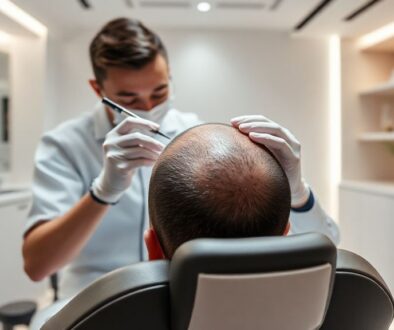Tattoo Removal Without Laser – Things to Consider
The tattoo removal consultation is the crucial step for every patient and the professionals take most of the time in understanding the patient’s problems. We will be discussing the common questions that one need to consider for tattoo removal without laser technique.
Cost for Tattoo Removal – For patients, pricing becomes a factor for removing the tattoo. Search for reputed consultants who have a transparent pricing structure where they focus on the value of the procedure. Generally, the cost is quite higher when removing the tattoo than being inked. Take your time for getting the best rates as several tattoo-removing techniques have different rates. A minimum treatment session for a small tattoo would cost between sixty to a hundred dollars. By knowing the minimum price, the patients can calculate roughly before doing the treatment. There are treatments packages where the total cost like the total number of sessions, aftercare treatment, consultation fees, etc. are provided to the clients.
Time Duration – The time taken for complete tattoo removal without laser is everyone’s concern. One must understand that the removal of the tattoo depends on the ability of the body for eliminating ink from the skin. It is quite common for the body to take more than one year for the complete elimination of the ink. One needs to set realistic expectations rather than thinking he/she is misled. For best result, the waiting period should be three months between treatments. Treatment sessions depend upon layered tattoos or significant scarring. Some may need three to four or some need more than ten treatments.
Getting Hurt during Tattoo Removal? – It depends upon the type of treatment. When applying ointment or cream in the tattooed area, one will not feel any pain. While choosing a Dermabrasion technique, one can feel the sensation of a rubber band snapping against the skin. The technician must discuss with the patients that one will feel discomfort at a certain extent but it is manageable. Numbing the skin helps in providing better patient care as well as higher satisfaction to the patients. With a chilling machine, cold air is blown during, before and after treatments. Other numbing options include topical numbing creams, lidocaine injections, and ice packs.
Will there be a Scar? – Many people are not aware of the fact that any scarring is often left over when the tattoo was done by the artist rather after the tattoo removal process. During the fast tattoo removal without laser procedure, the pigment within the scar tissue is broken and ink will be eliminated from the affected area but scarring from the original tattoo will remain. This scarring can be removed by using a homemade paste like aloe vera, lemon, and honey as well as various scarring creams available in the market but will take a longer period for removing the scar. Scarring also occurs when the patients do not follow the aftercare instructions. Scabs and blisters are common side effects during tattoo removal healing process. However, not taking care of blisters or picking scabs will lead to scarring. The experts must inform the patients for using the right protocols that will be safe for the skin.
Side – Effects – They are an expected outcome of the removal process for all patients. Beforehand, the patients are informed about the various side effects so that after the removal procedure they do not get shocked the next day when their skin will become sensitive or feel uneasy during normal activities. The common side effects are bruising, blistering, hyperpigmentation, scabs, swelling, redness, and tenderness. If the right protocols are taken based on the patient’s skin tone and tattoo, then these side effects are temporary. Following treatment swelling, tenderness and redness disappear after two days. Blisters, bruises, and scabs take more than a week to heal. Patients having middle to darker skin tones are at greater risk of pigmentation changes and must avoid exposure to the sun for a few weeks. Patients having pigmentation problems need to wait until the affected area has returned to its original skin tone and then start the treatment process again.

